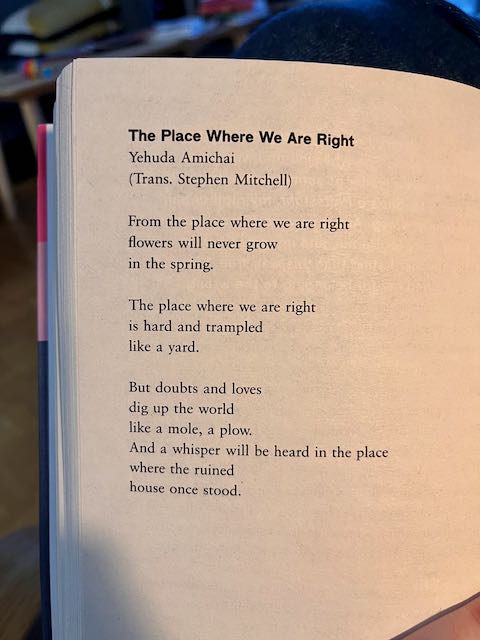“Our task is to make trouble, to stir up potent response to devastating events, as well as to settle troubled waters and rebuild quiet places” (Haraway, 2016, p. 1)
Recently a friend asked me to explain the link between the things I’m interested in and frequently share (articles, poems, hikes, stories, tweets, photos) and the work I do (libraries, makerspaces, education, mentorship, departmental leadership). This is a hard question because while I can sense a link, it’s tentative and speculative. My interests over the last few years have coalesced around nature, biology, emergence, bodies, movement, poetry, wonder, and love. That is a weird list, especially for someone who for many years identified as an avowed atheist and materialist. I no longer find these stories as sufficient or interesting as I once did.
It’s also a hard question because I want there to be a link. I sympathize with those who want a clear separation between their work and the rest of their lives. Boundaries are important, and need to be structurally part of our institutions to protect people from exploitation and give them time for rest and deep thinking. But my interests and beliefs bleed through these boundaries, and I’ve decided I like that about myself.
I’m also much more interested than I once was in pragmatic ideas that can be implemented. How do we actively respond to the world we actually find ourselves living in? The world I grew up in doesn’t exist anymore and probably never did, at least for most people. The illusion of stability and progress has been undone by upheavals on every front: environmental, social, political, and technological. Many of these upheavals are good, some are existential.
Recently I’ve been returning to my notes from the book Staying with the Trouble: Making Kin in the Chthulucene by Donna Haraway. There is so much wisdom in this book, which is rich with metaphor and imagery and grist for thinking about how we live in the world in which we find ourselves:
“I am not interested in reconciliation or restoration, but I am deeply committed to the more modest possibilities of partial recuperation and getting on together. Call that staying with the trouble. And so I look for real stories that are also speculative fabulations and speculative realisms. These are stories in which multispecies players, who are enmeshed in partial and flawed translations across difference, redo ways of living and dying attuned to still possible finite flourishing, still possible recuperation” Haraway, 2016, p. 10
One of the stories Haraway proposes is the Chthulucene:
“All of these stories are a lure to proposing the Chthulucene as a needed third story, a third netbag for collecting up what is crucial for ongoing, for staying with the trouble. The chthonic ones are not confined to a vanished past. They are a buzzing, stinging, sucking swarm now, and human beings are not in a separate compost pile. We are humus, not Homo, not anthropos; we are compost, not posthuman. As a suffix, the word kainos, “-cene,” signals new, recently made, fresh epochs of the thick present. To renew the biodiverse powers of terra is the sympoietic work and play of the Chthulucene. Specifically, unlike either the Anthropocene or the Capitalocene, the Chthulucene is made up of ongoing multispecies stories and practices of becoming-with in times that remain at stake, in precarious times, in which the world is not finished and the sky has not fallen—yet. We are at stake to each other. Unlike the dominant dramas of Anthropocene and Capitalocene discourse, human beings are not the only important actors in the Chthulucene, with all other beings able simply to react. The order is reknitted: human beings are with and of the earth, and the biotic and abiotic powers of this earth are the main story” (Haraway, 2016, p. 55)
Universities and academic libraries were built for stable stories and dominant narratives. I’m not saying these stories were true or even about stability (many of them were about change and innovation), but they relied on ideas about stability (degrees lead to stable jobs, expertise is this and not that, knowledge is best captured in these forms) that I don’t think can be taken seriously anymore as stories that organize our lives.
So how do we live, teach, and do research in the Chthulucene? How do we provide space and services that support the co-creation of the new stories we will need, without creating new dominant stories that silence others? What does instruction and mentorship look like? What about care and love? How do we relate to our students, ourselves, staff, faculty, administrators, contractors, and community members, including the owls that nest above the loading zone behind the library? What abour the land? What does the research commons, the academic department, the student union, the academic library, the makerspace, the reference desk look like?
These are the questions I’m thinking about when I think about the connections between the things I am interested in and my work. I do not really have answers. Answers aren’t necessarily the point.
